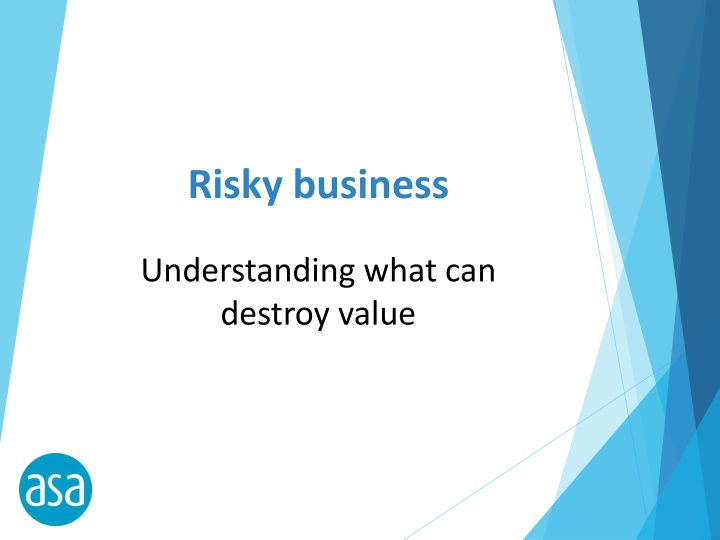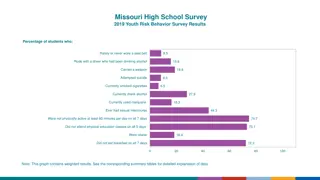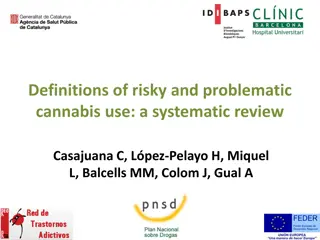
Risks to Investment Value and ESG Factors
Explore the risks that can impact the value of investments, including ESG considerations. Understand the importance of non-financial drivers, sustainability, and management quality in protecting long-term investment value.
Download Presentation

Please find below an Image/Link to download the presentation.
The content on the website is provided AS IS for your information and personal use only. It may not be sold, licensed, or shared on other websites without obtaining consent from the author. If you encounter any issues during the download, it is possible that the publisher has removed the file from their server.
You are allowed to download the files provided on this website for personal or commercial use, subject to the condition that they are used lawfully. All files are the property of their respective owners.
The content on the website is provided AS IS for your information and personal use only. It may not be sold, licensed, or shared on other websites without obtaining consent from the author.
E N D
Presentation Transcript
Risky business Understanding what can destroy value
Risks Two sorts of risks The risk to the value of your investment if you do not understand what risks management is bringing into the business and how it can affect financial performance down the track The risk of not understanding that the community increasingly does not view shareholder value maximisation as a reasonable rationale for how directors make decisions or corporations behave.
Risks to value of investment ESG risks this not not socially responsible investment It is the inclusion of environmental, social, and governance factors into financial analysis to evaluate risks and opportunities AMP Capital research shows that only around 26% of a company s true value lies in physical assets such as stock or buildings Intangible assets make up the other 74% A number of studies show that ESG principles positively affect long-term, risk-adjusted returns
Risks to the value of investment Understanding non-financial drivers provides deeper insights into how well a company or asset grows and protects company value let s consider some examples Retail companies, management of supply chain and labour issues and bribery and corruption exposure are key drivers, particularly for those entities with offshore operations Insurance companies, staff management practices including absenteeism, training, professional development and turnover rates are important indicators of overall company value and management quality
Risks to value of investment While there might be relatively weak links between individual intangible drivers and short-term earnings or share price overall ESG performance can be a good proxy for management quality In addition, ESG analysis can detect investment risks before they blow-up and identify cases where current business models are not sustainable in the long-term
Environment risks (Blackrock) Carbon emissions Air quality Energy management Fuel management Water and wastewater management Waste and hazardous materials management Biodiversity impacts
Social capital risks (Blackrock) Human rights and community relations Access and affordability Customer welfare Data security and customer privacy Fair disclosure and labelling Fair marketing and advertising
Human capital risks (Blackrock) Industrial relations Fair industrial practices Employee health, safety and wellbeing Diversity and inclusion Remuneration and benefits Recruitment, development and retention
Business model & innovation (Blackrock) Lifecycle impacts of products and services Environmental, social impacts on assets & operations Product packaging Product quality and safety
Leadership & governance (Blackrock) Systemic risk management Accident and safety management Business ethics and transparency of payments Competitive behaviour Regulatory capture and political influence Materials sourcing Supply chain management
How to analyse ESG risks Very challenging for retail shareholders The ESG research by parties is expensive and geared to institutional investors But more companies report on a broad array of issues, including their atmospheric emissions, energy and water consumption, labour and diversity standards, human rights practices and executive remuneration linked to ESG performance More third-party sources are gathering data, such as MSCI, Sustainalytics, Thomson Reuters and Bloomberg and provide comprehensive ESG scoring on an ongoing basis
How to analyse ESG risk Companies Climate Performance Score (CDP) scores, which provide a measure of their climate change initiatives, are now available on Google Finance, thus adding to the pool of public data that investors have access to More analysts cover ESG as an integral part of their business and today, there are more analysts engaged in collecting and evaluating ESG data than ever before There are higher levels of engagement with ESG issues by institutional investors, proxy advisers and asset managers and ASA is now starting to look at this in engagement
Risks to value of investment ESG is all about time horizons The best interests of the company cannot just be performance at any cost This leads into the second set of risks
Shareholder primacy under question Directors do not owe their duties to shareholders although case law has granted primacy to shareholders interests Directors owe their fiduciary duty to the best interests of the company No corporations law across 26 jurisdictions has required directors to to act in best interests of shareholders
Shareholder primacy under question Shareholder primacy view holds that the overriding goal of the corporation is to maximise shareholder value Significant criticism of this view including: It puts private interest of shareholder ahead of public interest External costs of corporation, eg cost to the community or the environment, passed to society while shareholders benefit from increased wealth Shareholders have no personal liability for corporate decisions and can remain indifferent to how profit is generated
Shareholder primacy under question Shareholder value maximisation increasingly in conflict with community expectations This in itself is a risk to the value of the investment Corporations need to maintain their social licence to operate This leads back to responsibility of shareholders to be aware of ESG risks






















